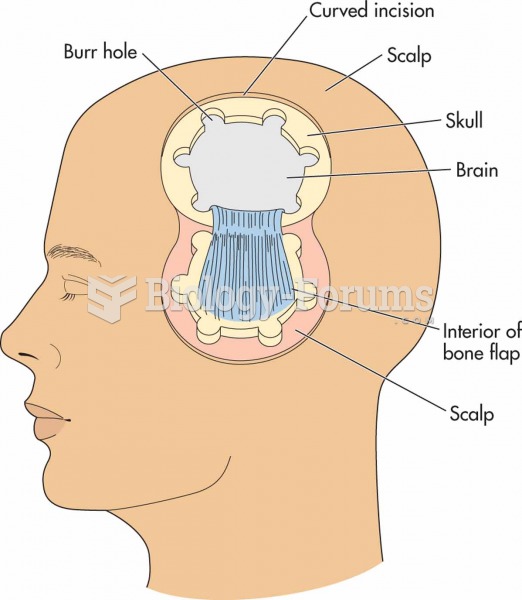|
|
|
When taking monoamine oxidase inhibitors, people should avoid a variety of foods, which include alcoholic beverages, bean curd, broad (fava) bean pods, cheese, fish, ginseng, protein extracts, meat, sauerkraut, shrimp paste, soups, and yeast.
A strange skin disease referred to as Morgellons has occurred in the southern United States and in California. Symptoms include slowly healing sores, joint pain, persistent fatigue, and a sensation of things crawling through the skin. Another symptom is strange-looking, threadlike extrusions coming out of the skin.
According to the CDC, approximately 31.7% of the U.S. population has high low-density lipoprotein (LDL) or "bad cholesterol" levels.
The first war in which wide-scale use of anesthetics occurred was the Civil War, and 80% of all wounds were in the extremities.
The horizontal fraction bar was introduced by the Arabs.
 The Peary caribou is a relatively small and pale subspecies found in the tundra of far northern Nort
The Peary caribou is a relatively small and pale subspecies found in the tundra of far northern Nort
 In a craniotomy, a portion of the skull and overlying scalp is pulled back to allow access to the br
In a craniotomy, a portion of the skull and overlying scalp is pulled back to allow access to the br





